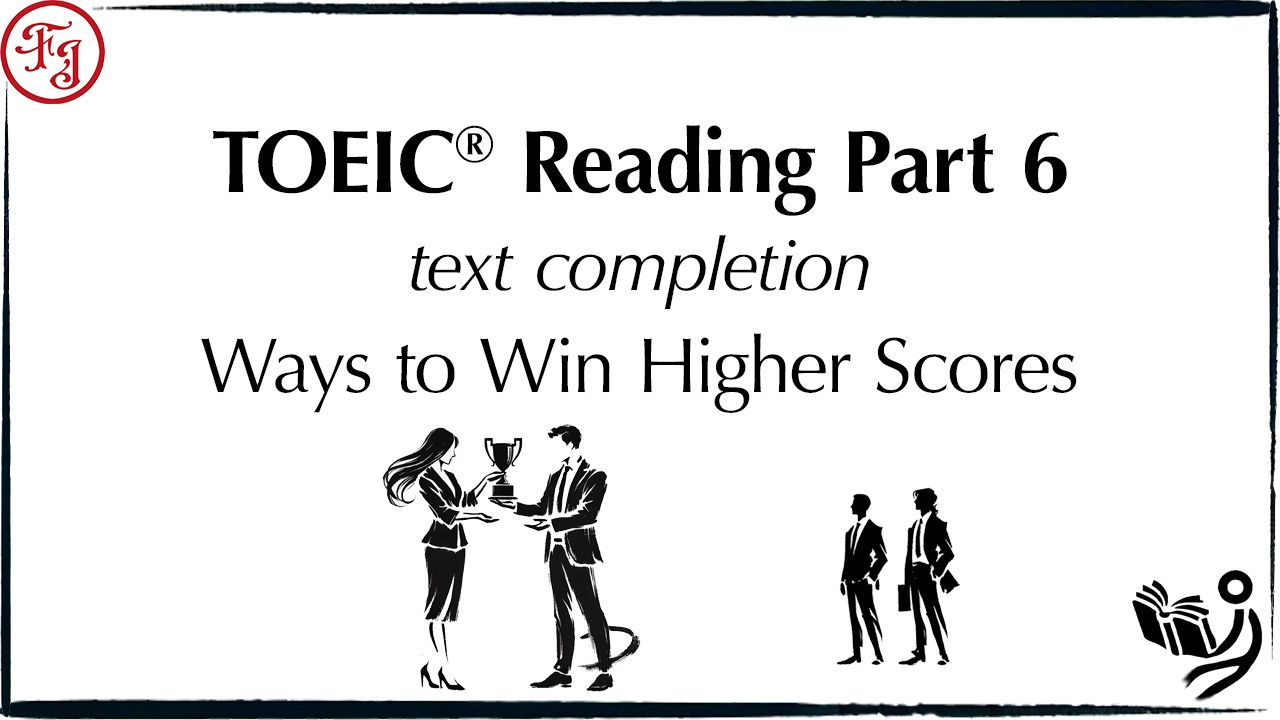TOEIC® Reading Part 6: Text Completion—Winning Strategies for Higher Scores
Oct 30, 2024
In Part 6 of the TOEIC test, you’ll encounter content where four passages have words, phrases, or even entire sentences are missing. Your task is to select the best option to complete each blank, testing your understanding of grammar, vocabulary, and the logical flow of the text. Let’s explore some effective strategies to help you excel in this section.
Understand the TOEIC Part 6 Format
Part 6 of the TOEIC® test is the second part in the Reading section. Each group of four questions comes from a passage. These passages can be emails, letters, articles, or announcements. After reading the passage, you’ll choose the best answer for each blank from four options provided. One of the blanks requires you to select the most appropriate sentence to insert into the passage, ensuring coherence and continuity.
Tips for Success
1. Read the Entire Passage First
Before attempting to fill in the blanks, read the whole passage to grasp the overall context, tone, and purpose. Understanding the big picture will help you make more informed choices for each blank.
2. Analyze Surrounding Sentences
Pay attention to the sentences before and after each blank. They often contain clues about the correct grammatical form or the appropriate vocabulary needed.
3. Consider the Logical Flow
For sentence insertion questions, think about how each option affects the flow of ideas. The correct sentence should connect smoothly with the preceding and following sentences.
4. Focus on Grammar and Vocabulary
Look out for subject-verb agreement, verb tenses, prepositions, conjunctions, and pronouns. A strong grasp of grammar rules and vocabulary nuances will help you eliminate incorrect options.
5. Expand Your Vocabulary
Familiarize yourself with synonyms, antonyms, and words with multiple meanings. This will enhance your ability to choose words that fit the context perfectly.
Practice with Taro Sanno
Let’s put these tips into action with a practice passage featuring Taro Sanno—a skilled programmer and passionate musician and one of Famous James' students.
Questions 143-146 refer to the following email.
Dear Team,
I hope this email finds you well. We are about to [143] on an exciting project with our colleagues from the London office. This initiative is a fantastic opportunity to collaborate closely, showcase our innovative skills and learn from each other.
I’ve attached the project brief to this email. Reviewing it beforehand will give you a better understanding of our objectives. The kickoff meeting is scheduled for Monday at 9 a.m. in Conference Room A. Please [144] your laptops and any preliminary ideas you might have.
Your input is invaluable, and I encourage everyone to participate actively. If you have any questions or need clarifications, do not hesitate to [145] me.
Let’s bring our creativity and expertise together to make this project a tremendous success. [146]
Best regards,
Taro
P.S. I’m thinking of organizing a team-building outing soon—perhaps a live rock concert!
[143]
(A) embark
(B) disembark
(C) withdraw
(D) surrender
[144]
(A) forget
(B) bring
(C) analyze
(D) request
[144]
(A) contact
(B) obstruct
(C) overlook
(D) negotiate
[145]
(A) Together, we’ll hit all the right notes!
(B) Please disregard this email if you’re busy.
(C) The deadline has already passed.
(D) I apologize for any inconvenience caused.
Review the Answers
1. (A) embark
Explanation: “Embark on” is a common expression meaning to begin a journey or project. It fits perfectly in the sentence: “We are about to embark on an exciting new project…” Options (B) “disembark” means to leave a vehicle or ship, which doesn’t fit. Options (C) “withdraw” and (D) “surrender” have negative connotations that don’t match the enthusiastic tone.
2. (B) bring
Explanation: “Please bring your laptops and any preliminary ideas…” is a logical request for a meeting. “Bring” fits the context of preparing for a collaborative session. Option (A) “forget” is illogical, (C) “analyze” doesn’t fit grammatically here, and (D) “request” doesn’t make sense in this context.
3. (A) contact
Explanation: “Do not hesitate to contact me” is a standard and polite way to encourage communication. Options (B) “obstruct” and (C) “overlook” are inappropriate, and (D) “negotiate” doesn’t fit the context of reaching out for questions or clarifications.
4. (A) Together, we’ll hit all the right notes!
Explanation: This sentence uses a musical metaphor that fits Taro’s personality and adds an encouraging, motivational closing to the email. It aligns with the positive tone of the message. Options (B), (C), and (D) either do not fit the context or introduce negative or irrelevant information.
Practice with Famous James Adventures!
Join Famous James and his students as they navigate real-world English scenarios. These exercises are designed to simulate TOEIC Part 6 passages, providing you with the practice you need to succeed. Visit our store to get more practice materials.
By integrating these strategies into your study routine, you’ll enhance your ability to select the correct answers confidently. Just like Taro blends his tech skills with his love for rock music, you can combine these tips to rock your TOEIC test!
Keep practicing, stay focused, and note your progress.
Stay connected with news and updates!
Join our mailing list to receive the latest news and updates from our team.
Don't worry, your information will not be shared.
We hate SPAM. We will never sell your information, for any reason.

